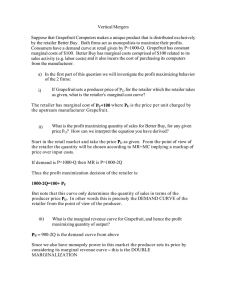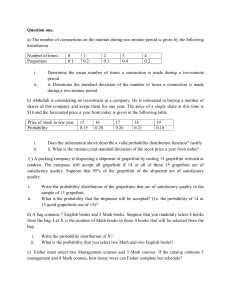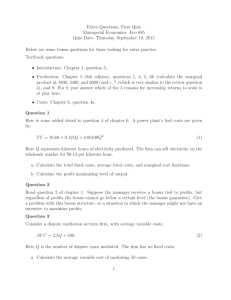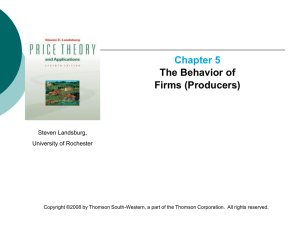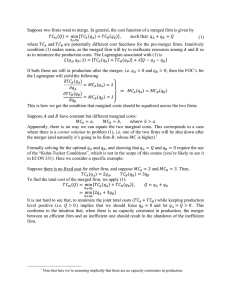Vertical Mergers
advertisement
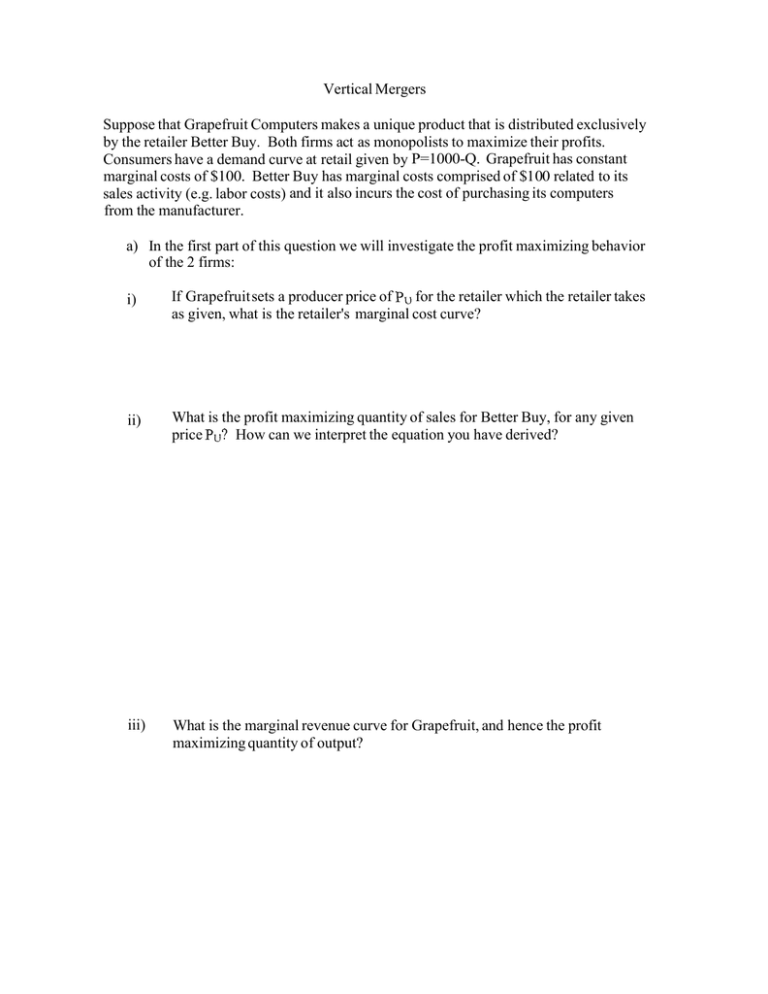
Vertical Mergers Suppose that Grapefruit Computers makes a unique product that is distributed exclusively by the retailer Better Buy. Both firms act as monopolists to maximize their profits. Consumers have a demand curve at retail given by P=1000-Q. Grapefruit has constant marginal costs of $100. Better Buy has marginal costs comprised of $100 related to its sales activity (e.g. labor costs) and it also incurs the cost of purchasing its computers from the manufacturer. a) In the first part of this question we will investigate the profit maximizing behavior of the 2 firms: i) If Grapefruit sets a producer price of PUfor the retailer which the retailer takes as given, what is the retailer's marginal cost curve? Pu+lOO ii) PU What is the profit maximizing quantity of sales for Better Buy, for any given price Pu? How can we interpret the equation you have derived? PU PU. iii) PU What is the marginal revenue curve for Grapefruit, and hence the profit maximizing quantity of output? iv) What are the producer and retail price of the computer, and hence the profits of each firm? b) Now we will proceed to examine whether this vertical structure is maximizing its profits. i) Suppose that Grapefruit could sell its computers directly to consumers, incurring the same retail costs as Better Buy in part a). What would be the profit maximizing price and quantity now? ii) What are the profits of the firm? iii) If Grapefruit cannot create its own retail network, but has to rely on that of Better Buy can it create value by buying out the retailer? iv) What is the economic rationale for the merger? Why is the vertical structure inefficient and how does the merger create value? c) Thinking about welfare more generally, the merger allows the firms to exploit their monopoly power more effectively. Does this come at the cost of consumer surplus? Should the merger be permitted on the grounds of economic efficiency?
